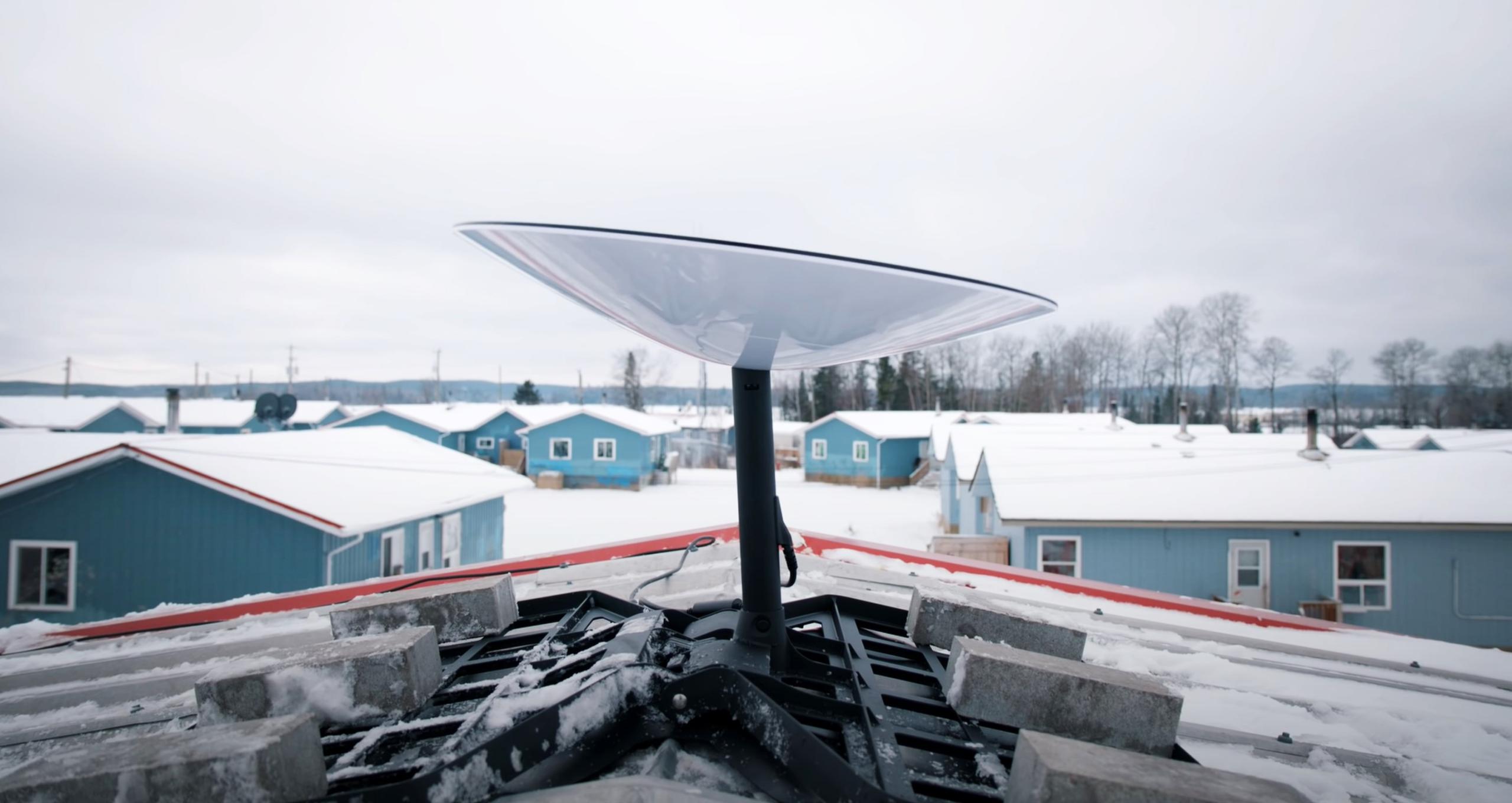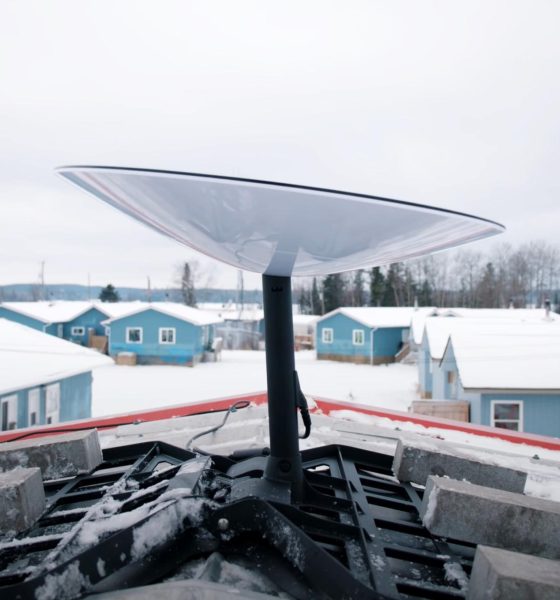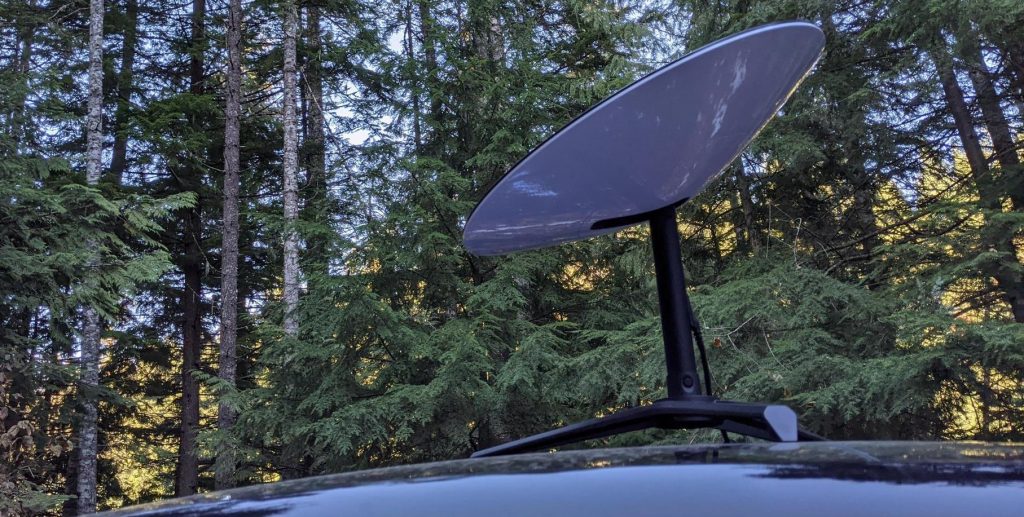

News
US military wants SpaceX to create a miniature, battery-powered Starlink dish
The US Department of Defense wants to find out if SpaceX can make a miniature, wireless version of the antennas currently used to connect to Starlink satellite internet.
The US Special Operations Command (USSOCOM) announced its interest in miniaturized Starlink terminals as part of a Broad Agency Announcement (BAA) soliciting proposals for dozens of small research and development projects under the US Small Business Innovation Research (SBIR) program. At this stage, just hours after the round of SBIR proposal requests was published, it’s unclear if the US military is already coordinating with SpaceX on the topic of human-portable Starlink antennas or if the request is open to proposals from anyone.
Still, said request [PDF] does provide some intriguing details about its primary goals.
Portable Starlink SBIR US DoD SOCOM by Eric Ralph on Scribd
Hat-tip to Michael Sabo for spotting the SBIR.
In short, the purpose of the research topic is to “conduct a feasibility study to assess” whether it’s possible to “develop a small form factor system that enables reliable access to the Starlink commercial internet system.” In essence, as increasingly capable radio, data, and internet links have become a virtual necessity for a majority of people in the modern world, the same is true for military operations – connectivity is more useful and strategically essential than ever before.
Along those lines, US SOCOM wants to determine if it’s possible to develop an antenna that can connect to SpaceX’s vast Starlink satellite constellation while still being small and efficient enough for individual soldiers to carry – and operate – while on the move. Of note, the SBIR would necessarily be open to virtually any American business or individual capable of meeting its goals – not just SpaceX, in other words. As of today, SpaceX has never mentioned an interest in or willingness to allow third-party suppliers to develop Starlink-compatible antennas – a move that would undoubtedly make waves. As such, it seems safe – but perhaps not entirely safe – to assume that SOCOM is releasing this proposal request under the implicit assumption that only proposals from SpaceX itself will be considered.

Simultaneously, a miniature, battery-powered antenna capable of connecting to Starlink and providing a “reliable internet connection” would obviously be of immense commercial interest to both SpaceX and competing low Earth orbit internet constellation companies like OneWeb and Amazon. It’s unclear if accepting government funds and performing development under an SBIR grant – particularly for US military special forces – would interfere with SpaceX’s ability to commercialize the same wireless antenna for civilian use.
Of note, SpaceX CEO Elon Musk has already stated that a miniature mobile Starlink antenna “sounds like a good idea,” though there has been no sign of any work on such a device.
Regardless, the DoD will accept proposals for the latest batch of SBIR contracts between May 19th and June 19th. If SOCOM ultimately chooses to award a Phase I contract and the resulting feasibility study concludes that human-portable Starlink antennas are within the realm of possibility, SpaceX (or unlikely third-party offerors) could move from theoretical or laboratory research to prototype development through a Phase II proposal. A hypothetical Phase III proposal would follow up Phase II with a focus on building and testing a substantial number of prototypes in the field, possibly resulting in an operational procurement contract.

News
Tesla FSD fleet is nearing 7 billion total miles, including 2.5 billion city miles
As can be seen on Tesla’s official FSD webpage, vehicles equipped with the system have now navigated over 6.99 billion miles.

Tesla’s Full Self-Driving (Supervised) fleet is closing in on almost 7 billion total miles driven, as per data posted by the company on its official FSD webpage.
These figures hint at the massive scale of data fueling Tesla’s rapid FSD improvements, which have been quite notable as of late.
FSD mileage milestones
As can be seen on Tesla’s official FSD webpage, vehicles equipped with the system have now navigated over 6.99 billion miles. Tesla owner and avid FSD tester Whole Mars Catalog also shared a screenshot indicating that from the nearly 7 billion miles traveled by the FSD fleet, more than 2.5 billion miles were driven inside cities.
City miles are particularly valuable for complex urban scenarios like unprotected turns, pedestrian interactions, and traffic lights. This is also the difference-maker for FSD, as only complex solutions, such as Waymo’s self-driving taxis, operate similarly on inner-city streets. And even then, incidents such as the San Francisco blackouts have proven challenging for sensor-rich vehicles like Waymos.
Tesla’s data edge
Tesla has a number of advantages in the autonomous vehicle sector, one of which is the size of its fleet and the number of vehicles training FSD on real-world roads. Tesla’s nearly 7 billion FSD miles then allow the company to roll out updates that make its vehicles behave like they are being driven by experienced drivers, even if they are operating on their own.
So notable are Tesla’s improvements to FSD that NVIDIA Director of Robotics Jim Fan, after experiencing FSD v14, noted that the system is the first AI that passes what he described as a “Physical Turing Test.”
“Despite knowing exactly how robot learning works, I still find it magical watching the steering wheel turn by itself. First it feels surreal, next it becomes routine. Then, like the smartphone, taking it away actively hurts. This is how humanity gets rewired and glued to god-like technologies,” Fan wrote in a post on X.
News
Tesla starts showing how FSD will change lives in Europe
Local officials tested the system on narrow country roads and were impressed by FSD’s smooth, human-like driving, with some calling the service a game-changer for everyday life in areas that are far from urban centers.

Tesla has launched Europe’s first public shuttle service using Full Self-Driving (Supervised) in the rural Eifelkreis Bitburg-Prüm region of Germany, demonstrating how the technology can restore independence and mobility for people who struggle with limited transport options.
Local officials tested the system on narrow country roads and were impressed by FSD’s smooth, human-like driving, with some calling the service a game-changer for everyday life in areas that are far from urban centers.
Officials see real impact on rural residents
Arzfeld Mayor Johannes Kuhl and District Administrator Andreas Kruppert personally tested the Tesla shuttle service. This allowed them to see just how well FSD navigated winding lanes and rural roads confidently. Kruppert said, “Autonomous driving sounds like science fiction to many, but we simply see here that it works totally well in rural regions too.” Kuhl, for his part, also noted that FSD “feels like a very experienced driver.”
The pilot complements the area’s “Citizen Bus” program, which provides on-demand rides for elderly residents who can no longer drive themselves. Tesla Europe shared a video of a demonstration of the service, highlighting how FSD gives people their freedom back, even in places where public transport is not as prevalent.
What the Ministry for Economic Affairs and Transport says
Rhineland-Palatinate’s Minister Daniela Schmitt supported the project, praising the collaboration that made this “first of its kind in Europe” possible. As per the ministry, the rural rollout for the service shows FSD’s potential beyond major cities, and it delivers tangible benefits like grocery runs, doctor visits, and social connections for isolated residents.
“Reliable and flexible mobility is especially vital in rural areas. With the launch of a shuttle service using self-driving vehicles (FSD supervised) by Tesla in the Eifelkreis Bitburg-Prüm, an innovative pilot project is now getting underway that complements local community bus services. It is the first project of its kind in Europe.
“The result is a real gain for rural mobility: greater accessibility, more flexibility and tangible benefits for everyday life. A strong signal for innovation, cooperation and future-oriented mobility beyond urban centers,” the ministry wrote in a LinkedIn post.
News
Tesla China quietly posts Robotaxi-related job listing
Tesla China is currently seeking a Low Voltage Electrical Engineer to work on circuit board design for the company’s autonomous vehicles.

Tesla has posted a new job listing in Shanghai explicitly tied to its Robotaxi program, fueling speculation that the company is preparing to launch its dedicated autonomous ride-hailing service in China.
As noted in the listing, Tesla China is currently seeking a Low Voltage Electrical Engineer to work on circuit board design for the company’s autonomous vehicles.
Robotaxi-specific role
The listing, which was shared on social media platform X by industry watcher @tslaming, suggested that Tesla China is looking to fill the role urgently. The job listing itself specifically mentions that the person hired for the role will be working on the Low Voltage Hardware team, which would design the circuit boards that would serve as the nervous system of the Robotaxi.
Key tasks for the role, as indicated in the job listing, include collaboration with PCB layout, firmware, mechanical, program management, and validation teams, among other responsibilities. The role is based in Shanghai.
China Robotaxi launch
China represents a massive potential market for robotaxis, with its dense urban centers and supportive policies in select cities. Tesla has limited permission to roll out FSD in the country, though despite this, its vehicles have been hailed as among the best in the market when it comes to autonomous features. So far, at least, it appears that China supports Tesla’s FSD and Robotaxi rollout.
This was hinted at in November, when Tesla brought the Cybercab to the 8th China International Import Expo (CIIE) in Shanghai, marking the first time that the autonomous two-seater was brought to the Asia-Pacific region. The vehicle, despite not having a release date in China, received a significant amount of interest among the event’s attendees.








